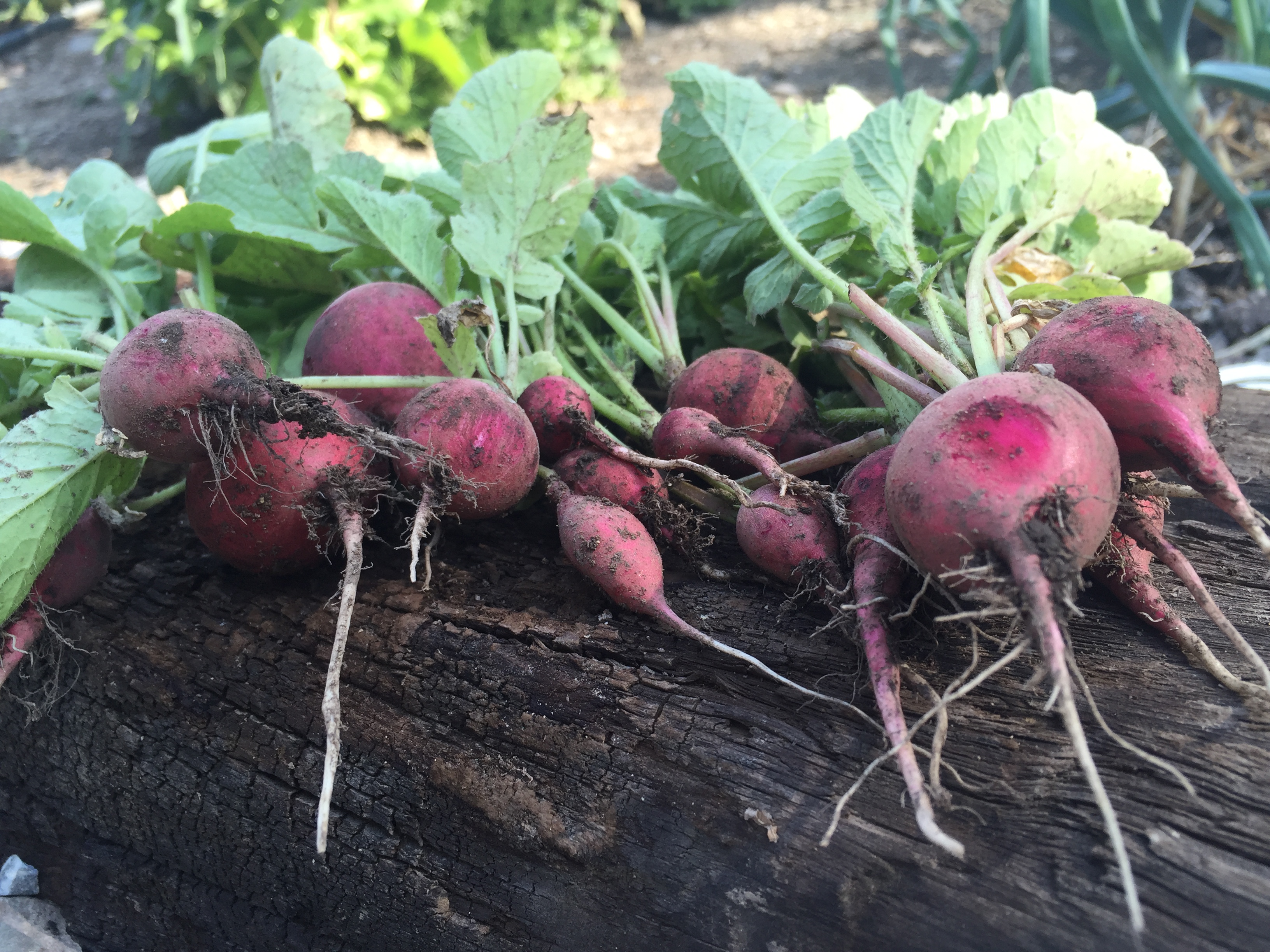By Sarah LeVesque, Recent ASU Nutrition Student
Radishes have been in the shadows! Okay, not really. They actually grow in the sunlight and love sandy soils. It’s a cruciferous vegetable that’s family to kale and packs some serious health benefits. Radishes come in different shapes, sizes, and colors. They are identified by the seasons they are harvested in. There are over 180 varieties and cultivars. They are a versatile bunch. They can be eaten raw, pickled, or roasted.

They are a part of a family of brassica vegetables. These are vegetables like cauliflower, mustard green, and arugula. Brassica vegetables have been known for their cancer-fighting properties. Radishes contain a variety of different vitamins, minerals, and some phytonutrients.
Nutrients: Just one cup of raw, sliced radishes comes in at under 20 calories. They are full of vitamin C. In just one cup of raw, sliced radishes, you can get 30% of your daily value. Vitamin C is an essential vitamin that’s required in the biosynthesis of collagen, L-carnitine, protein metabolism, and in certain neurotransmitters. Usually, the first thing we hear when we are sick is that we need some vitamin C. It’s an important antioxidant and is a key component in immune functions.
Radishes contain a smaller amount of potassium, folate, riboflavin, niacin, vitamin B6, vitamin K, calcium, magnesium, zinc, phosphorus, copper, manganese, and sodium. That’s a lot of bang for your buck. Adding radishes to a salad or dish could only make the meal more valuable when it comes to nutrients.
Proteins and Amino Acids: Amino acids are the building blocks of protein, and radishes have almost all of them! Although our bodies can make amino acids, there are some that we must get from our diets. These are the essential amino acids. I added a list of the amino acids found in radishes. You can click on any of those links to see why they are important.
The amino acids from one cup of sliced, raw radishes:
Essential Amino Acids:
Tryptophan 10.4 mg
Threonine 26.7 mg
Isoleucine 23.3 mg
Leucine 30.0 mg
Lysine 38.3 mg
Methionine 11.6 mg
Cystine 11.6 mg
Phenylalanine 41.8 mg
Tyrosine 10.4 mg
Valine 40.6 mg
Nonessential Amino Acids:
Arginine 44.1 mg
Alanine 30.2 mg
Aspartic acid 74.3 mg
Glutamic acid 182 mg
Glycine 30.2 mg
Proline 25.5 mg
Serine 31.3 mg
Histidine 15.1 mg
We’re all familiar with tryptophan around Thanksgiving. People say it’s the protein that makes us sleepy after eating a turkey dinner. Tryptophan is converted into serotonin, which is the neurotransmitter regulates appetite, sleep, mood, and pain. The suggested recommended daily intake of tryptophan is 3.5 milligrams per kilogram of weight. One cup of sliced, raw radishes contains about 10.4 milligrams. Other foods contain tryptophan and adding radishes to your plate would only help you reach your recommended daily intake.
One essential amino acid you might not have heard of is threonine. It’s involved with tooth enamel, collagen, and elastin. Threonine is important for our nervous system, helps in fat metabolism, and prevents fat buildup in the liver. It’s even used to treat anxiety and depression. It’s also an important amino acid because it supports our immune systems. The recommended daily intake for threonine is about 8-10mg/kg body weight in healthy adults. One cup of sliced, raw radishes contains about 26.7 mg. Who knew eating your radishes can keep you happy inside and out?
These are just two of the amino acids that are found in radishes. I could write all day about amino acids and how our bodies use them. They’re important for our bodies and their functions. It’s an amazing thing to get down to the chemical ways foods aids our body’s natural functions.
Therefore it’s important to add a variety of foods to our plates. Trust me, I know it’s not easy incorporating other vegetables, fruits, grains, and even meats into your diets. I often times walk past all of the other vegetables in the produce section or at the local farmers market and go with what I know. When I do that, I’m passing up some powerful vegetables that I completely underestimated. Radishes are one of them!
Popular Varieties:
White Icicle– thin and white skin. Mild flavor with a crisp texture. It’s about 4-6 inches long.
Sparkler– these radishes are red and have a bright white tip and flesh. They’re a sweet radish.
Cherry belle– small as a cherry, round, smooth, and red! It’s a pretty common radish.
White beauty– white, crisp flesh with a mild flavor.
French breakfast– has an oblong root, scarlet skin, and has a mildly pungent flavor.
Daikon long white– a Japanese favorite. The white roots can grow 24 inches long, and 3 inches wide, with a sweet and crisp flavor.
Easter Egg- resembling Easter eggs, these round radishes are found in a variety of colors: purple, red, or cream.
Black Spanish- they’re about 3-4 inches big with black skins. They’re pungent and spicy and have medicinal properties.
Finally, our Arizona Farmers excel at growing radishes. Whether grown on one of our small organic farms, or large conventional farms Arizona grown radishes should fill your plate!

